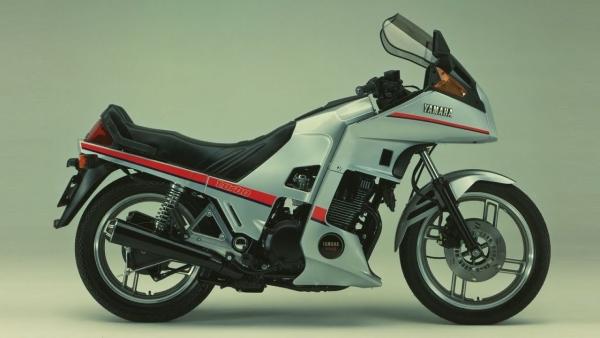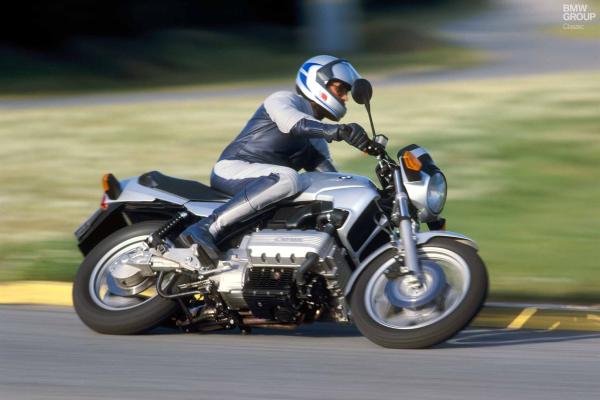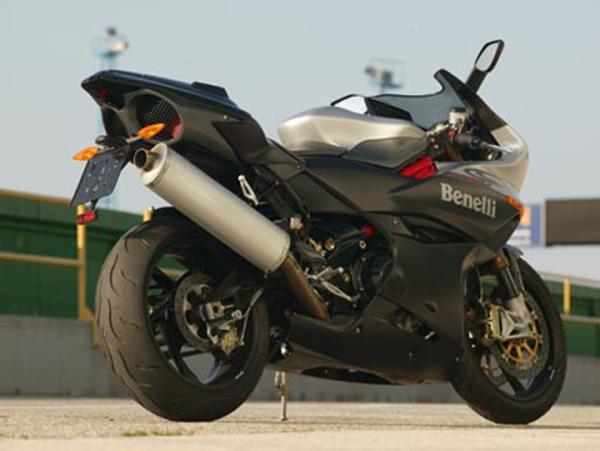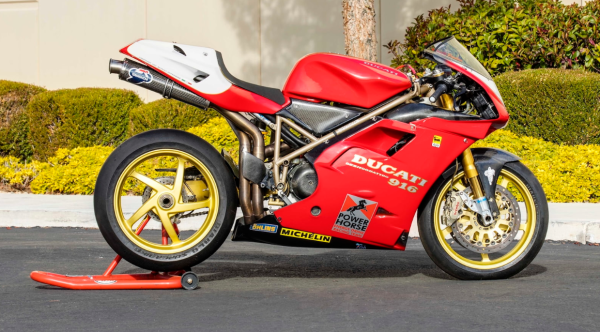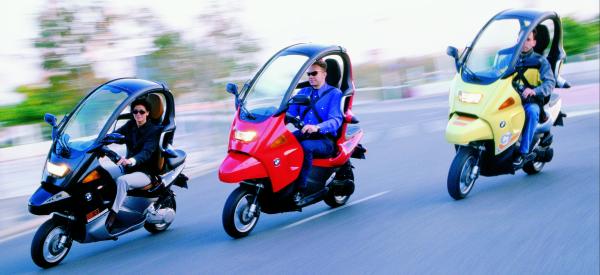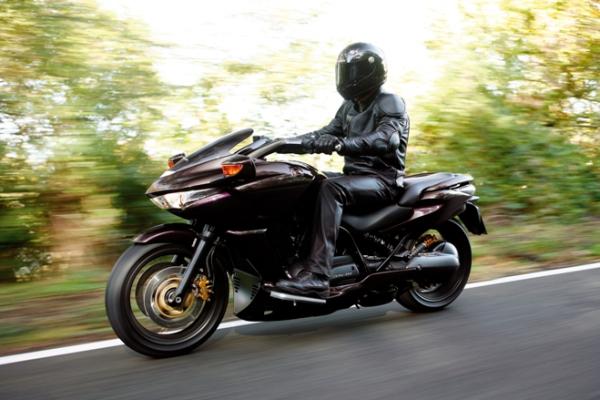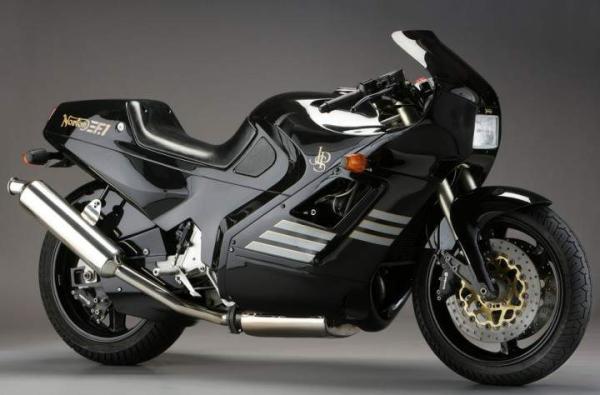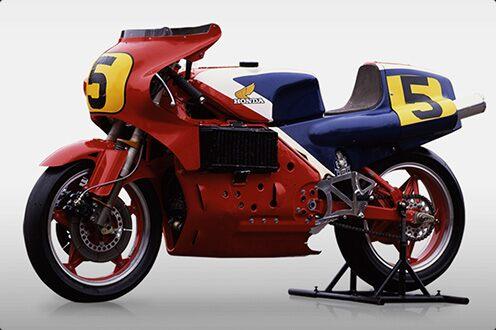Grand Plans | The Top 10 worst innovations in motorcycling
For every brilliant motorcycling idea – fairings, disc brakes – there has inevitably been some diabolical ones... here are the best. Or worst

Member for
54 years 9 monthsFor every brilliant motorcycling idea – fairings, disc brakes – there has inevitably been some diabolical ones (roofed bikes, inboard discs), too. It only stands to reason; it’s the ‘ying and yang’ of life, after all…
But with Harley-Davidson about to launch its very first adventure bike, the Pan America, a machine built on the cumulative knowledge and experience of, at best, the Buell Ulysees, it got us wondering: Just what have been the worst ideas in motorcycling – ever?
We’re not thinking of disastrous models here – Yamaha’s GTS1000 or BMW’s R1200CL – we’ve already covered those in our recent ‘Top 10 Motorcycle Flops’.
Nor does a bad idea necessarily mean a bad motorcycle. Motorcycling, and particularly Honda, interestingly, has a gob-smacking back catalogue of bad ideas made good – or at least passable – due to brilliant engineering. No-one in the right mind thinks oval pistons or a turbo CX500 are good ideas, after all. It was only Honda’s dogged brilliance that (almost) made them work…
So what other ‘worst ideas’ have the motorcycle manufacturers foisted on us over the years? Here’s our 10 of the best… sorry, worst.
10 Split indicator switches
After over 100 years of motorcycling most bike controls have adapted to universal conventions: the right hand twistgrip throttle, a left-foot gearchange and a left thumb toggle switch for indicators… ah.
And then there’s BMW.
In the early ‘80s with its K100, at the same time as reinventing the straight four (‘let’s mount it longitudinally, not transversely!’), the Bavarian marque also ‘reinvented’ motorcycle switchgear, specifically the convention of the indicator toggle, by replacing one switch with, not just two, but three separate buttons: left and right ‘on’ buttons, on the left and right switch pods, respectively, plus a separate ‘cancel’ button, also on the left.
In truth, once acclimatised to, it worked OK and many owners became very loyal. But ‘three instead of one’ was also very ‘Heath-Robinson’, counter-convention and never likely to survive. That it did so until 2008 was the impressive bit.
Oh, and by the way, Harley’s two button system (one on each bar) hasn’t been overlooked and isn’t much better either…
9 Underseat exhausts
We blame the NR750. Honda’s oval-pistoned folly was a conundrum of bonkers engineering but it was also so advanced, ambitious and good-looking it spawned a host of imitators.
The NR’s sexy underseat pipes begat those of the gorgeous Ducati 916 and, before you knew it, virtually every sports bike between 1995 and 2008 had underseat exhaust pipes, too. And we still don’t really know why. Some of them (Ducati 999, Yamaha FZ6) didn’t even look very good.
Why they were bad was obvious: mass decentralisation; complicated routing; loss of underseat storage; hot saddles etc. While the positives were few (easier to fit panniers). We can’t, however, deny the allure of the NR and 916…
8 Single-sided swing-arms
Another bad idea that’s also somehow really good. There’s no engineering sense to an RC30-style single-sided swing arm. To get the physics to work they have to be complicated and heavy – that’s why Ducati swapped from the 916’s single-swinger to the dual arm of its succeeding 999, after all.
But it does have some appeal in endurance racing to speed rear wheel changes (that’s what the RC30 was developed for in the first place) and they DO look absolutely flippin’ brilliant. Which is why single-sided swingers live on today on multiple Ducatis, Kawasakis and more…
7 Inboard disc brakes
Remember Honda’s CBX550 of 1982? Or maybe the VF400F? If you do you’re probably not thinking of the former’s screaming four-cylinder performance, a precursor to the 600 supersports that would soon follow. Or the latter’s brilliant V4, one of Honda’s first stabs at the format before the brilliance of the later VFR750.
No, instead you’re probably reminded of Honda’s brief infatuation with what it called ‘Inboard Ventilated Disc Brakes’, a shrouded front disc brake system claimed to improve wet weather braking but in reality achieving nothing of the sort and was instead a folly prone to overheating and a nightmare to service. Within two years Honda had recognised this themselves and dropped the whole idea…
6 ‘Roofed’ motorcycles
Yes, we’re mostly thinking of BMW’s revolutionary C1, here – but it certainly wasn’t the only one. The short-lived C1 was actually a brilliant idea and worked well, the idea basically being a commuter with a car-style ‘safety-cage’ including seat belts and a protective roof that was not only weatherproof but, in some countries, also negated the need for a crash helmet.
Unfortunately, however, the 125cc version was heavy and slow (although a 200 was better), UK law required a helmet (removing one of its USPs) and it was expensive. As a result, sales were slow and the C1 was discontinued in 2002 just two years after launch.
Today, however, it’s an in-demand used buy and considered something of a revolutionary classic. An alternative take on the idea was the Benelli Adiva, launched in 2001, which looked similar to the C1 but offered none of the BMW’s crash protection, instead having a ‘convertible’ roof. It remained in production until 2006.
5 ‘Feet forward’ machines
Another contentious one, simply because, although the machines were commercial failures, there are still plenty of proponents and disciples of the breed out there who swear to its success. Foolish and deluded, the lot of ‘em. We’re talking about contraptions like the 1970s Quasar or ‘90s Voyager, of course, but again, there are plenty of others.
The basic principle is the same: a low-slung two-wheeler with a ‘feet forward’ riding position, hub-centre steering and, often, car-style, roofed weather protection and luggage capacity. The results looked futuristic, had some value in a straight line and often carved smooth curves on A roads.
But there’s no denying the fact they were also intimidatingly unconventional, often crudely powered (Reliant Robin 850 engines anyone?), heavy and ungainly at low speed or in tight spaces and never even remotely refined or reassuring. Of course, if Honda had made one it might have been different. Then again, it did, sort of, with the DN04, NM4 Vultus and more, all of which, though intriguing, were pointless.
4 Turbos
Have you noticed how popular turbos have become on bikes? Exactly. So while the exhaust-driven, induction-pressurising turbines have proved hugely popular in cars, boosting the top end of otherwise sluggish but economical diesels and increasing the performance of small-engined city cars, when it comes to lightweight bikes, neither advantage applies – although with ever-tightening emissions regulations it yet might.
Of course, in the early-to-mid ‘80s, the motorcycling world temporarily went ‘turbo mad’, with Honda first producing the CX500 then 650 Turbo followed by Yamaha’s XJ650T, Suzuki’s XN85 and Kawasaki’s GPz750T.
But people also quickly realised they offered little true performance advantage (Kawasaki’s own naturally-aspirated GPz1100, was lighter, quicker and cheaper than its turbo 750), the turbo ‘lag’ was intrusive and they were heavy, over-complicated and expensive.
3 Rotary engines
Yes, we all joyously remember the years of the Norton rotary racers of the early 1990s: the black and gold ‘evil empire’ that, in the hands of Trevor Nation, Steve Spray, Terry Rymer and more briefly blitzed British racing with their fire-spitting 588cc twin rotor machines.
But, let’s get this straight: they weren’t really 588cc (measuring swept capacity has always been one of the rotary’s problems); their performance, though blistering, was unsuited to the road and prone to overheating and they were also thirsty, unreliable and ‘dirty’, emissions-wise, too. Suzuki know this, following its RE5 debacle in the mid-1970s.
Norton should also have realised it and made something more conventional, better and cheaper, so perhaps preventing the shedding of an awful lot of pounds and tears…
2. Hub-centre steering
Yes, conventional motorcycles’ continued use of telescopic forks is an anathema: its old-fashioned, ‘bicycle’ technology that counter-intuitively combines the steering and suspension functions in the same component. But… they work and, due to decades of development and clever tech, actually work brilliantly.
Trouble is, plenty of boffins, vexed by that ‘combined function’ paradox, have repeatedly tried over the years to come up with a better system, with hub-centre the prime example. Yamaha tried it with its disastrous GTS1000 and Bimota has been banging on about its Tesi for years (and probably shouldn’t have). The logic of separated functions eliminating suspension-compomising fork dive under braking and all the unwelcome geometry changes that go with it is unquestioned.
What is, however, is everything else: Linkages make the steering imprecise, there’s reduced steering lock, they’re heavy and complex, expensive, need regular servicing… I could go on. If modern, light, simple, effective telescopic forks didn’t work so well there may be some point exploring hub-centre and the like. As it is it’s a flawed gimmick.
1 Oval pistons
There’s surely no more definitively ‘bad’ idea in motorcycling than that of the Honda NR’s oval pistons. The only way you could be more obtuse or counter-intuitive is to suggest square wheels, surely? But its success, although limited, is still astounding and the story of its creation fascinating.
After deciding to return to 500 GP racing in the late 1970s, but determined to compete with its favoured four-strokes against the dominant two-strokes of Yamaha and Suzuki (the rules favouring the strokers’ twice as many power strokes), Honda’s response was to effectively create a ‘V8’ (with the extra valves and combustion area that goes with it) but in regulation-fitting ‘V4’ form – by mating pairs of pistons/cylinders together in an ‘oval’ shape.
Although flawed and riddled with unreliability (most infamously blowing up at the British GP at Silverstone before the first corner), what’s most amazing is that Honda got the NR500 to work at all, what with the inherent problems of piston ring sealing etc.
And, though the 500 version was abandoned in favour of the NS500 two-stroke triple (which took Freddie Spencer to world championship success within just two years), a 750 impressed in world endurance before Honda brought out the road NR750 in 1992, a bike which remains one of the most advanced and collectible motorcycles of all time. Still a bad idea, though.
